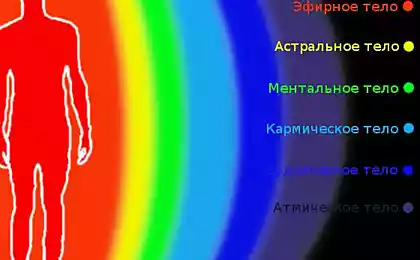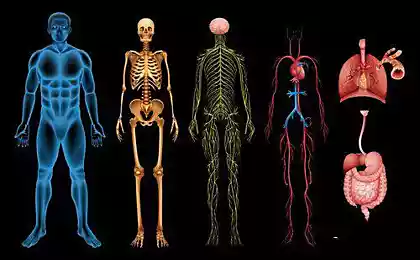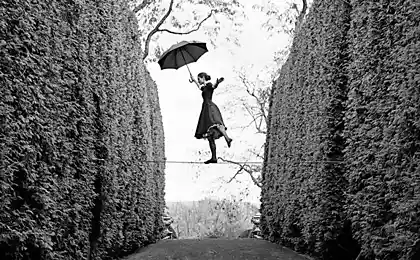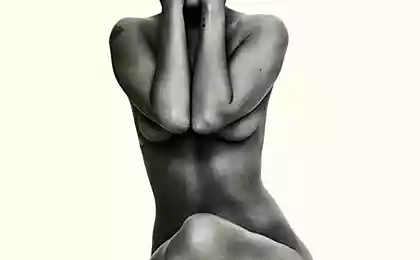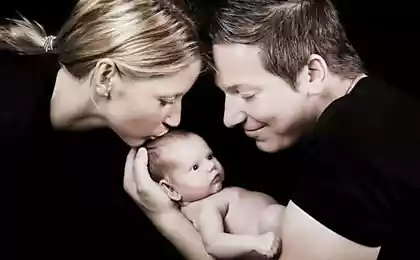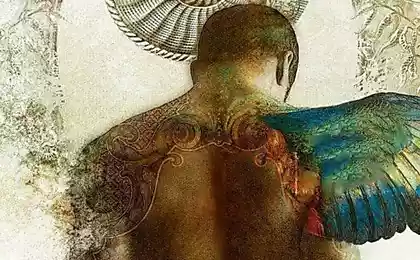782
The body loves the truth: 9 useful books about the relationship with the body
9 books about the relationship with the body.
How to learn to love and understand my body, consciously and correctly manage them? What prevents us to feel the freedom of movement and open up new possibilities of the body? On (dis) harmony of body and soul historians, philosophers, and psychologists have written hundreds of books.
We offer you a selection of 9 books:
1. "The body loves the truth," David Servan-Schreiber
French neuroscientist and columnist for Psychologies David Servan-Schreiber, just with live examples talks about the relationship between body and psyche, about bridges between traditional and folk medicine, spiritual practices, hypnosis, acupuncture, qigong. And about how to "learn to trust your body, trust him more than ready to allow the current medicine". What works – chemistry or placebo effect? What we can take from the experiences of shamans? How does homeopathy? The book consists of essays, many of which were published in Psychologies. (RIPOL Klassik, 2014)
Sixty seven million five hundred fifty eight thousand five hundred thirty four
2. "The history of the body" In 3 volumes. Edited by Alain Corbin and others.
The three-volume monograph written by European and American anthropologists and historians of culture on the body as a cultural model. The subject of their reconstruction becomes the very essence of material civilization. The authors tell about the history of medicine and health, about sex and the art of reading bodily signs... And it's about the perception of smells, emotions, body image in literature and art. It is not surprising that such a vast topic requires a few volumes. Two already out – "From the Renaissance to the Enlightenment and From the French revolution to the First world war." (UFO, 2012, 2014)
3. "The philosophy of the body. Body freedom" Mikhail Epstein, Gregory Tulchinsky
Philosophers Mikhail Epstein and Gregory Tulchin in his works explore the human in the era of virtual and genetic technologies, paying special attention to the ethical and aesthetic aspects of touch. The tactility, sensuality, love intimacy have traditionally been viewed in the culture and philosophy as "low" levels of perception of the world, but in the era of creating artificial intelligence is man begins to be perceived differently, and carnal knowledge becomes the basis of cognitive and creative activities. This book is "how to think, love, create body". (Aletheia, 2006).
4. "Rosen method: Movement and body work are" Marion Rosen, sue Brenner
When we experience strong feelings, changing nature of our breathing, tense muscles, preparing us for action. And if the action is not happening, if it is suppressed, it remains in the body clips.If these muscles are in constant alert and do not relax.Rosen method is a working with breath, movement and emotions. It is aimed at lifting clamps to return the body of its original flexibility and mobility. German physiotherapist Marion Rosen was more than 55 years old when she began to teach the first student. Prior to that, she worked with patients as a doctor and led the group, designing your method. She passed away at the age of 98, in 2012, but 96 years continued to teach. The book is written in collaboration with sue Brenner, a student of Marion. (Psychotherapy, 2010).
5. "The psychology of corporality between the soul and the body" edited by V. Zinchenko, T. Levi
Russian philosophers, psychotherapists and psychologists, are trying in the articles of this collection to integrate, connect that in Western culture for many centuries was divided – the soul and body of man. To understand how the physical and the spiritual are combined in each of us, and neglect one in favor of another leads to a variety of somatic or mental diseases. (AST, 2006). Among the authors: Valery Podoroga, Vladimir Baskakov, Sergei Khoruzhii, Tatiana Boakes, Alexander Liders. (AST, 2006)
6. "A brief history of the human body. 24 hours in the life of the body: sex, food, sleep, work" Jennifer Ackerman
What happens to our body during the day –Wake up and a coffee in the morning until falling asleep after a hard day? How to react to our brain, sense organs, muscles, and stomach for thousands of routine and movements: driving, a delicious lunch or taking drugs, having sex, buying clothes and meeting up with friends? American journalist and popularizer of science Jennifer Ackerman summarizes in his curious book the results of hundreds of studies from medicine, neurobiology, psychology and genetics of the last decade. The resulting picture is able to capture the imagination – as a coherent and sophisticated structure appears our body and such a serious load he overcomes, supporting our life.
Forty million seven hundred sixteen thousand seven hundred thirty three
7. "Psychosomatics and body psychotherapy" mark Sandomirsky
As there are physical illnesses and mental problems? As they are connected among themselves? How to help yourself and loved ones to get rid of them? Book by psychotherapist Mark Sandomirsky is all the famous body-oriented approaches in psychotherapy, detailing the mechanisms of interaction of our body and our psyche, describes in detail the different psycho work with your body and yourself. Colleagues call this book a guide for everyday life. (The class, 2007)
8. "The psychology of the body" Alexander Lowen
Free breathing, grace, sexuality, energy inherent in a healthy person; the lack of these qualities speaks about starting problems, says the American psychiatrist and psychotherapist, Creator of bioenergetics, Alexander Lowen. In his book given exercises that help you to feel your body, to release energy and emotions, to regain the grace, and in General to affect the harmonious development of personality. The theme of the interaction of mental and physical problems, Lowen returned in his other books – "Depression and body", "Sex, love and heart." (Corvette, 2014)
Sixty million seven hundred twenty four thousand nine hundred thirty six
9. "The signs of the body in children. A complete guide to the health of your children," Joan Liebmann-Smith, Jacqueline Egan
Doctor of medicine Joan Liebmann-Smith and medical journalist Egan, Jacqueline answer questions from new parents about the signs of the body in children that cause them concern. About the spots, dimples, fingers, the rhythm of the breath... "Why on the back of the head the child had a bald head?", "Is it normal that the baby is small and shrunken ear?» The authors, slowly explain what features of the body can be a sign of serious illness and which are completely harmless and require no intervention, but also, time to drop a line in the fields interesting comments "on topic" – interesting facts, warnings, advice. In many cases, the book will not replace a visit to the doctor, but calm overly anxious parents with a balanced, friendly tone. Table of contents in which characters are grouped by "location" (head, eyes, ears, torso...), helps to easily navigate the book. (Sofia, 2011). published
P. S. And remember, just changing your mind — together we change the world! ©
Source: roza2012.net.ua/ya-i-moe-telo-9-knig-o-tom-kak-nam-naladit-otnosheniya.html
How to learn to love and understand my body, consciously and correctly manage them? What prevents us to feel the freedom of movement and open up new possibilities of the body? On (dis) harmony of body and soul historians, philosophers, and psychologists have written hundreds of books.
We offer you a selection of 9 books:
1. "The body loves the truth," David Servan-Schreiber
French neuroscientist and columnist for Psychologies David Servan-Schreiber, just with live examples talks about the relationship between body and psyche, about bridges between traditional and folk medicine, spiritual practices, hypnosis, acupuncture, qigong. And about how to "learn to trust your body, trust him more than ready to allow the current medicine". What works – chemistry or placebo effect? What we can take from the experiences of shamans? How does homeopathy? The book consists of essays, many of which were published in Psychologies. (RIPOL Klassik, 2014)
Sixty seven million five hundred fifty eight thousand five hundred thirty four
2. "The history of the body" In 3 volumes. Edited by Alain Corbin and others.
The three-volume monograph written by European and American anthropologists and historians of culture on the body as a cultural model. The subject of their reconstruction becomes the very essence of material civilization. The authors tell about the history of medicine and health, about sex and the art of reading bodily signs... And it's about the perception of smells, emotions, body image in literature and art. It is not surprising that such a vast topic requires a few volumes. Two already out – "From the Renaissance to the Enlightenment and From the French revolution to the First world war." (UFO, 2012, 2014)
3. "The philosophy of the body. Body freedom" Mikhail Epstein, Gregory Tulchinsky
Philosophers Mikhail Epstein and Gregory Tulchin in his works explore the human in the era of virtual and genetic technologies, paying special attention to the ethical and aesthetic aspects of touch. The tactility, sensuality, love intimacy have traditionally been viewed in the culture and philosophy as "low" levels of perception of the world, but in the era of creating artificial intelligence is man begins to be perceived differently, and carnal knowledge becomes the basis of cognitive and creative activities. This book is "how to think, love, create body". (Aletheia, 2006).
4. "Rosen method: Movement and body work are" Marion Rosen, sue Brenner
When we experience strong feelings, changing nature of our breathing, tense muscles, preparing us for action. And if the action is not happening, if it is suppressed, it remains in the body clips.If these muscles are in constant alert and do not relax.Rosen method is a working with breath, movement and emotions. It is aimed at lifting clamps to return the body of its original flexibility and mobility. German physiotherapist Marion Rosen was more than 55 years old when she began to teach the first student. Prior to that, she worked with patients as a doctor and led the group, designing your method. She passed away at the age of 98, in 2012, but 96 years continued to teach. The book is written in collaboration with sue Brenner, a student of Marion. (Psychotherapy, 2010).
5. "The psychology of corporality between the soul and the body" edited by V. Zinchenko, T. Levi
Russian philosophers, psychotherapists and psychologists, are trying in the articles of this collection to integrate, connect that in Western culture for many centuries was divided – the soul and body of man. To understand how the physical and the spiritual are combined in each of us, and neglect one in favor of another leads to a variety of somatic or mental diseases. (AST, 2006). Among the authors: Valery Podoroga, Vladimir Baskakov, Sergei Khoruzhii, Tatiana Boakes, Alexander Liders. (AST, 2006)
6. "A brief history of the human body. 24 hours in the life of the body: sex, food, sleep, work" Jennifer Ackerman
What happens to our body during the day –Wake up and a coffee in the morning until falling asleep after a hard day? How to react to our brain, sense organs, muscles, and stomach for thousands of routine and movements: driving, a delicious lunch or taking drugs, having sex, buying clothes and meeting up with friends? American journalist and popularizer of science Jennifer Ackerman summarizes in his curious book the results of hundreds of studies from medicine, neurobiology, psychology and genetics of the last decade. The resulting picture is able to capture the imagination – as a coherent and sophisticated structure appears our body and such a serious load he overcomes, supporting our life.
Forty million seven hundred sixteen thousand seven hundred thirty three
7. "Psychosomatics and body psychotherapy" mark Sandomirsky
As there are physical illnesses and mental problems? As they are connected among themselves? How to help yourself and loved ones to get rid of them? Book by psychotherapist Mark Sandomirsky is all the famous body-oriented approaches in psychotherapy, detailing the mechanisms of interaction of our body and our psyche, describes in detail the different psycho work with your body and yourself. Colleagues call this book a guide for everyday life. (The class, 2007)
8. "The psychology of the body" Alexander Lowen
Free breathing, grace, sexuality, energy inherent in a healthy person; the lack of these qualities speaks about starting problems, says the American psychiatrist and psychotherapist, Creator of bioenergetics, Alexander Lowen. In his book given exercises that help you to feel your body, to release energy and emotions, to regain the grace, and in General to affect the harmonious development of personality. The theme of the interaction of mental and physical problems, Lowen returned in his other books – "Depression and body", "Sex, love and heart." (Corvette, 2014)
Sixty million seven hundred twenty four thousand nine hundred thirty six
9. "The signs of the body in children. A complete guide to the health of your children," Joan Liebmann-Smith, Jacqueline Egan
Doctor of medicine Joan Liebmann-Smith and medical journalist Egan, Jacqueline answer questions from new parents about the signs of the body in children that cause them concern. About the spots, dimples, fingers, the rhythm of the breath... "Why on the back of the head the child had a bald head?", "Is it normal that the baby is small and shrunken ear?» The authors, slowly explain what features of the body can be a sign of serious illness and which are completely harmless and require no intervention, but also, time to drop a line in the fields interesting comments "on topic" – interesting facts, warnings, advice. In many cases, the book will not replace a visit to the doctor, but calm overly anxious parents with a balanced, friendly tone. Table of contents in which characters are grouped by "location" (head, eyes, ears, torso...), helps to easily navigate the book. (Sofia, 2011). published
P. S. And remember, just changing your mind — together we change the world! ©
Source: roza2012.net.ua/ya-i-moe-telo-9-knig-o-tom-kak-nam-naladit-otnosheniya.html
